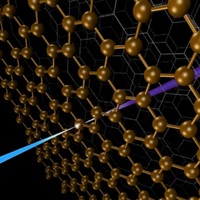Advertisement
Grab your lab coat. Let's get started
Welcome!
Welcome!
Create an account below to get 6 C&EN articles per month, receive newsletters and more - all free.
It seems this is your first time logging in online. Please enter the following information to continue.
As an ACS member you automatically get access to this site. All we need is few more details to create your reading experience.
Not you? Sign in with a different account.
Not you? Sign in with a different account.
ERROR 1
ERROR 1
ERROR 2
ERROR 2
ERROR 2
ERROR 2
ERROR 2
Password and Confirm password must match.
If you have an ACS member number, please enter it here so we can link this account to your membership. (optional)
ERROR 2
ACS values your privacy. By submitting your information, you are gaining access to C&EN and subscribing to our weekly newsletter. We use the information you provide to make your reading experience better, and we will never sell your data to third party members.
Analytical Chemistry
Atomic X-ray Laser Blasts Ahead
World’s most powerful X-ray laser outdoes itself with a more coherent beam to probe nanoscale materials
by Elizabeth K. Wilson
January 30, 2012
| A version of this story appeared in
Volume 90, Issue 5
A femtosecond-pulsed, atomic X-ray laser—beaming at the highest energies reached so far by its kind—could enable new developments in high-resolution spectroscopy, according to a report in Nature (DOI: 10.1038/nature10721). X-ray lasers have been in use since the 1980s, but scientists are forever in search of higher energy, shorter-pulsed, and more coherent beams to probe the atomic-scale distances and motions of molecules. Nina Rohringer of the Center for Free-Electron Laser Science, in Germany, and colleagues used SLAC National Accelerator Laboratory’sLinac Coherent Light Source (LCLS), which is a free-electron laser, to pump collections of neon atoms into high-energy states and achieve laser radiation of 849 eV. Although this energy is actually less than the 960 eV produced by LCLS, which is currently the world’s most powerful X-ray laser, the light produced by an atomic laser has advantages over that of a free-electron laser. For example, the Rohringer group’s laser produces light that is far more coherent, with photon energy spreads of less than 1 eV, whereas LCLS’s spread averages 15 eV.




Join the conversation
Contact the reporter
Submit a Letter to the Editor for publication
Engage with us on Twitter